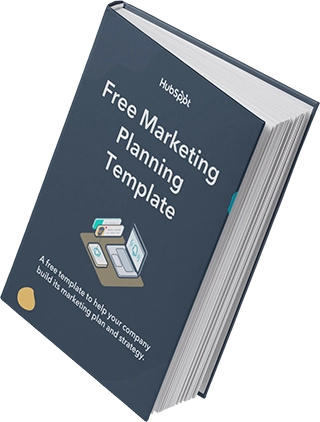Welcome to Trends, a weekly newsletter with the zestiest business trends and actionable insights for entrepreneurs.
While parents are buying fewer toys for their little ones, 43% of adults bought themselves a toy in the past year — including yours truly.
In fact, we out-shopped preschoolers for the first time in Q1 2024, attributing to $1.5B in toy sales.
Now, don’t get it confused with adult toys, a $45B market that lets us embrace our more, ahem, “adult” side. The toys I’m talking about are fun playthings that connect folks with their kid-like nature, from Pokemon cards and Legos to dolls and Squishmallows.

Free Marketing Plan Template
Outline your company's marketing strategy in one simple, coherent plan.
- Pre-Sectioned Template
- Completely Customizable
- Example Prompts
- Professionally Designed
Download Free
All fields are required.

Some potential drivers behind this surge in sales:
😷 The pandemic: We learned to treat ourselves and find happiness wherever we can in dark times. US toy sales spiked 37% in the first two years of Covid, much of it attributed to adults.
🎬 The media: The breakout success of Barbie, and Mattel’s marketing moves, reminded folks of what it felt like to be a kid with a doll again.
💝 Collectibility: The collectible toy market is worth $13.9B, driven by a sense of nostalgia.
But also, toys cheer us up from the general unease of not feeling quite like an adult, even if we’re well past 18.

Relatable. Source: Google Trends, six-month rolling average
We’ve got three ideas to cash in on the “kidults”:
1. “Embrace Your Inner Child” Experiences
Tap into the experience economy and design experiences that let adults come and be kids again. Organize events like:
🏕️ “Return to childhood” retreats: Let attendees run barefoot in the woods, fight with water guns, build treehouses, and play simple games like children do. Offer private retreats so people can do these with their select groups of friends (I get excited just thinking about it).
🧸 Toy workshops: Host regular workshops where adults learn to hand make their own toys. We wrote about the arts and crafts boom — mixing playtime with crafts like woodwork, painting, or even 3D printing will likely draw in big crowds.
🤸 Fitness for fun: Forget your reps and double the dopamine. Design group fitness classes that incorporate animal workouts, or build obstacle courses inspired by games (Super Mario, Temple Run, Subway Surfers, Mirror’s Edge… anyone?). I’ve run an inflatable 5K and it was a blast.
2. More Fun in The Built Environment
I live close to Hancock Playground, a colorful and spongy place where kids come to play.

Source: SBN Philadelphia
I always feel a twinge of nostalgia when I see kids — red in the face, hair unkempt — climb up and down that yellow structure. I tried it once, and it lit up my day the way caffeine never could.
Adults are welcome here, but whenever a kid comes by, I’ll feel bad and yield whatever it is that I’m enjoying.
There’s an opportunity to build more physical spaces where adults get to have fun without worrying about perception — like this mega swing set in an all-age playground (also in Philly!).
Take some inspiration from immersive museums like WNDR and Meow Wolf, but make it outdoors. Rent an open space, bring in swings, see-saws, slides… and maybe have specific times where it’s open to adults only.
3. A Hybrid Community
You can build a community for kid-like adults to hang out with one another (maybe call it “The After School Club”).
Incorporate components like:
- An online toy trading marketplace
- The ability to initiate group activity or “challenges” in real life
- A community forum to share discoveries and tips
You can also organize monthly events like those mentioned before, and charge a membership fee — you’ll be surprised at what people are willing to pay to feel like they’re turning back time.
-2.gif?width=498&height=331&name=family-guy-stewie%20(1)-2.gif)
Source: Tenor
If the popularity of toys tells us anything, it’s that grownups are starved for play.
Whether it’s toys, video games, or fun experiences, there are immense opportunities to help them let out their inner kids. It’ll do a world of good for their mental health, too.
I’ll leave you with this quote from Tomorrow, and Tomorrow, and Tomorrow:
“To allow yourself to play with another person is no small risk. It means allowing yourself to be open, to be exposed, to be hurt. It is the human equivalent of the dog rolling on its back — I know you won't hurt me, even though you can. It is the dog putting its mouth around your hand and never biting down. To play requires trust and love.”







![Getting Employee Training Right — Here's What I Learned [+Business Leader Insights]](https://knowledge.hubspot.com/hubfs/employee-training-1-20250212-1007768.webp)

![How to Sell Digital Products: Everything You Need to Know [+ 8 Best Digital Products to Sell]](https://www.hubspot.com/hubfs/how-to-sell-a-digital-product-1-20250131-1216509-1.webp)

